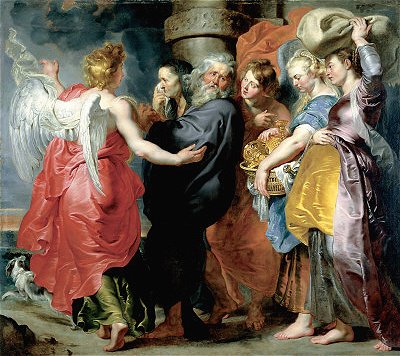To the contrary, his nudes, for which he became famous, always depicted an ample female form of vitality and good health as well as of sensuousness. His mastery of color along with his knowledge of antiquity is seen particularly in his mythological paintings. Rubens became the most influential figure in Baroque art in Northern Europe. His reputation was established in part thru the sheer scale and grandeur of his finished paintings which gave them an extra symphonic dimension. His mastery of history painting in the Grand Manner and the immense vigor of his style was unsurpassed. As court painter and confidant to the Archduchess Isabella Clara Eugenia, Rubens recognized the role art was to play in the Counter Reformation. His genius found expression in his designs for the Triumph of the Eucharist tapestries which he and his assistants completed between 1625 and 1628. Knighted by two monarchs and master of a successful workshop, Rubens became rich and famous in his own time. Having executed over 3,000 paintings, woodcuts and engravings of all types, he died the most respected artist of his time in 1640. Subject: Lot, his wife, and his two daughters were sent from the city before its destruction. They were told by the angels to go into the mountains and not to look back at Sodom lest they also be consumed by God's wrath. Lot's wife did look back and was turned into a pillar of salt. Later, Lot's daughters made their father drunk and committed incest with him in order to have children. Their descendents, the Ammorites, became enemies of Israel. Painting: The painting shows Lot, his wife, two daughters and two angels leaving the city. Rubens chose to depict a moment of joy mixed with sadness. Joy that they are saved from destruction - sadness that they must leave all their possessions and their friends to the wrath of God. Lot's wife is pictured as despondent, just before looking back at Sodom, for which she was turned into a pillar of salt. The daughters are seen to have taken golden objects with them against the dictates of the angels (note the candlesticks are seen under one daughters dress). These actions might be seen as an indication of the daughters' wayward inclinations which were to culminate in their incestuous relationship with their father. Historical Context: The story of Sodom and Gomorrah follows the expulsion of Adam & Eve from Eden for disobeying God's edict ; the curse put upon Cain for slaying his brother and the flood to sweep away all the wicked people, saving only Noah and his family. It took place in the time of Abraham, the patriarch of the Hebrew people who was the uncle of Lot. |
